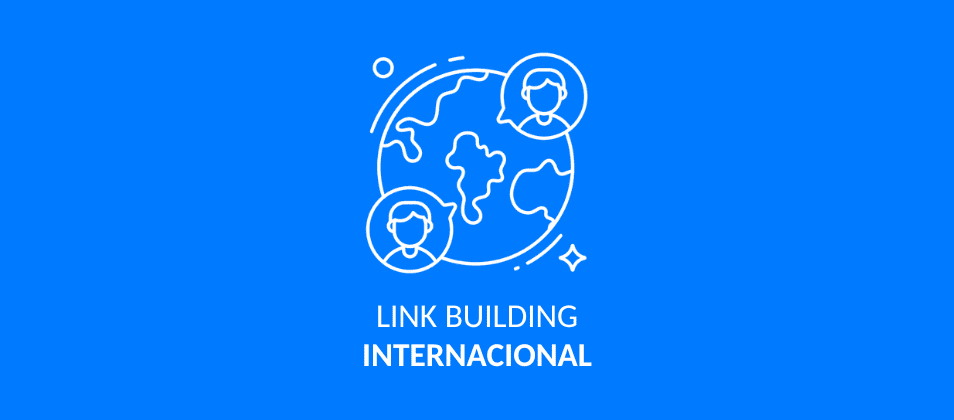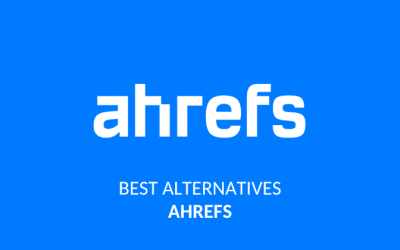International link building, get links without borders

If we talk about international link building, the first thing that should come to your mind is that global link building has no limits. It all depends on the location, language and countries you want to reach.
As you know, search engines do not show the same results depending on the country you are in. So you have to take this factor into account if you have a platform or website in different languages. We can assume that the internal structure of the page is correct, right? It is important that before starting with an international link building strategy you have all the on page work, or almost all of it, as spun as possible.
Once we have everything ready, take paper and pencil because today I come to tell you how to get quality links internationally. Don’t leave strategy aside when it comes to a comprehensive strategy. Let’s get to it.
Keys to understanding international link building
Imagine if you had to classify the link building steps in a pyramid, where the base is the most important and the top is the crowning glory of your international link building strategy. Well, let’s try to group them by importance accordingly. Let’s go from least “relevant” to most:
ccTLD
For the newbies or not very knowledgeable like me, this is the domain extension. That is (.com) or (.es), among others. Legend has it that the SERPs gave more importance to domains with country extensions when linking to us than to a simple and generic .COM.
But nothing could be further from the truth, when it comes to international link building, we have to make an evaluation of the domain by other measurements, metrics and standards that will allow us to see in a global way. And if, finally, the domain extension matches all of the above, we will have a reason to celebrate, since it will be the cherry on top of our perfect work. Even so, let’s remember that it is not the most important thing and far from being what will give us the absolute success of our publication.
Keywords
I would have to shut up, because it is obvious. But if the language in which we want to make the publication is not our mother tongue, make sure that the translation of the keyword, the search KW, is correct, not invented or a bad translation.
To give you an idea, I have a Crypto client whose obsession is that the specific keyword, both in the anchor and throughout the text, is literally “Bitcoin price”… If I put it as it is in English, I assure you that it will not look natural, in fact, it will be forced, hieratic and difficult to read in the eyes of any reader. If you want results and reliability, use grammatical naturalness.
Location
I would tell you that comes the easy part. Which is to select the country in which we want to position that keyword, right? But it’s not easy at all.
Depending on the country in which we want to position we will have it more or less simple. There are countries like the U.S. where guest posting or link exchange is used almost systematically, so finding options is relatively affordable. But having options does not mean that all of them are good.
So, when we talk about international link building, we can say that it depends on the country or countries we want to focus on. As I don’t want to be too heavy dividing the post by geographical areas, because it would be very long. I will leave here a small summary of those that I know best. And what practices are the most common in the top 5 countries according to the type of Linkbuilding:
- Spain: The media is very up to date with link building techniques. We have platforms like Linkatomic to have access to quality links in a fast and efficient way. So we could classify it as a simple option when it comes to link building. So I start from Spain as top 1 to compare with the others.
- USA: In the United States link building is very natural because there are infinite lists of publishers. Many times this does not make it easier, because the quantity of links and the quality of them is often counterproductive. The link providers are usually not native to this country. So the servers and IPs are usually from India or Pakistan… Or simply being PBNs turned link farms. Detracting value to the link or links we buy. Not always, but this requires a lot more research and time investment if you don’t know your way around this world.
- United Kingdom: In UK we have plenty of options to do a good job of link building. And I must say that the quality of the links we can find in this region is quite high. There is not so much link saturation and publishers are very suspicious of the links and content they publish. So the value of the links is high, and obviously, this increases the cost. Not everything works for them, so the creation of quality content is a “must“. And the door to visibility they open for you as well.
- France: “Netlinking” strategies, as they say there, are well known by companies. And there are also specialized platforms that allow you to get links. So the options are plentiful. Prices are high, but there are always websites with a good quality – price ratio.
- Italy: For the Italian public is very important the naturalness in the articles, like everything else. But this means that the semantic affinity with the niche and the website where we are going to get the links is fundamental. There are no native platforms, but in Linkatomic we have a wide variety of media where you can find the best links.
- Germany: Creating links in German is quite complex. Because it is a language with many variations and a complicated writing. This makes it essential to have native content to publish. Keep in mind that in this market it will always be more expensive than in others. Since the purchasing power is also more expensive. So an investment in linkbuilding will also bring a higher ticket if it converts well. Hence the choice of backlink building strategies is essential to appear in the first search results and be the first choice for users.
After this small summary of the top 5, I would like to add that at Linkatomic we have specialists who can help you with your link building strategy, regardless of the location you are most interested in. It would be hypocritical for me to tell you that I personally know how to do link building in every single country in the world. But we have a very competent team that can achieve results with very competitive strategies, regardless of the geographic location of your buyer persona. I won’t go on and on, let’s get to the other points.

Get 10% extra credit for your Link Building
Use the coupon WELCOME10 on your first recharge and get powerful links in newspapers and blogs of your topic. We have +20.000 digital media.
Language
I would like to make it clear that within the good practices of Linkbuilding to make campaigns based on geolocation is everything. But there are many more variables to analyze before getting down to work.
At this point I would like to propose a practical exercise:
Sophia has a motorcycle rental website in the Balearic Islands. He wants to increase his domain authority, online visibility and brand authority. Sophia has been advised by a friend that, if he gets links, they have to be targeted to his buyer persona. That is, English-speaking foreigners in the Balearic Islands. Considering that his business is in Spain and his clientele is English, what kind of publications should he acquire?
If your answer is “it depends“, it shows that you are a full-blooded SEO. The more complete answer would be that you have 2 options.
- Getting English-speaking links with traffic from Spain
- Check in which countries you are looking for this service to bring it already contracted to Spain.
In regions, localities and areas where one language is predominant, but there is a community with another language that is of interest, we do not have to limit ourselves to those media with such limited characteristics. We must expand horizons.
It is very likely that a part of the users that contract the service are in Spain and that is why it is reflected in Google Search Console that we have that type of traffic. But it does not mean that ALL the results shown in the search engines are of local origin.
This happens in many, many, many areas of the world. In Florida (USA) where the Spanish speaking population is very abundant or in Brazil – Portugal where due to the language affinity the results are mixed and Google shows results for both countries. But surely you can think of other combinations, such as results in Spanish for Latin America or results in English for Canada, United States, United Kingdom and Australia.
Does it mean that I should take for granted that the language alone will position me in the country I am interested in? No, but we can rely on .com domain extensions that have the potential to boost us as long as the languages match and there is a thematic affinity.
Target audience
It is inevitable that you have found the correlation between all the points about international link building that we have seen above. Because in all of them we have mentioned link building strategies that allow us to reach those users who might be interested in our services.
Part of running a company or taking care of its public relations means knowing where to find our target audience. We start from the assumption that our buyer is in the classic search engines. But we must keep in mind that the paradigm has changed, continues to change and will continue to do so, shifting to social networks, as indicated in some studies.
Link building from social networks drives that concept known by all of us EEAT that we can drive from different channels. A good PR will always advise you to diversify channels for optimal reach and measurement. Can we access link building through collaborations with influencers? Obviously yes. They do not have a stratospheric SEO strategy power in itself, but they can give us a boost in terms of traffic generation, visibility, which has an impact on the overall SEO positioning. Could we say that Influencer = authority? Yes, indeed. They have a long term and short term veracity that if your product/service is good can take off with a couple of mentions on Instagram or TikTok.
So from here we say Yes to the distribution of content through different channels to get those mentions with strategic quality backlinks from authority profiles that add value to our strategy.
Link Building differences between countries
I know we have already covered different countries to see how international linkbuilding hits differently depending on where we want to hit it. But they all have some common points that we can review to find the main differences:
Price
As we have already seen above, the price varies greatly depending on the country. And that’s not all. It is not the same for a German to try to buy directly in Mexico or a Brazilian to buy in Switzerland.
The price is not determined or pre-established by standards such as… Bread or tomatoes. Although they may have price fluctuations, it is not usual for me to be charged one price and my neighbor another if we go to the same supermarket to buy.
Well, in the case of international prices this is the order of the day. If I go from the United States to buy from a newspaper in Mexico, the price is likely to multiply substantially. That is why it is much more beneficial to use platforms that already have a fixed price.
It is very easy for us to get good prices in Spain because we know more or less how the rates are. But for markets like France, Brazil or Indonesia we have our experts who know how much is paid, how much and how. So there are no surprises for us.
Offer
It was also mentioned above that they do not necessarily have to have native platforms or a complete catalog. That’s why at Linkatomic we decided many years ago to add media relentlessly from as many countries as possible in order to meet this demand, which is becoming more and more global every day.
Finding new media that are relevant to the linking of our web pages is a difficult but necessary job that allows us all to open horizons. But not everyone has the time, patience and tools to grow a catalog and reach mutually beneficial agreements.
Competitor companies
Let’s be honest with ourselves. If you’re here, it’s because you want to expand your brand or your company’s brand beyond your own land. Which makes you directly a foreigner in your own sector.
It happens to all of us when we open a new market. It’s like shooting flies with cannons. We want it all. But the truth is that for a link building strategy to work here or in China, it is very important to keep track of the competition. What do they do, what do they eat, where do they sleep? Well, not so much…
Although knowing what link building actions these companies are doing can give us a clue as to what kind of links they are getting and what their strategy is for their websites.
At Linkatomic we decided a long time ago that checking competitors’ links is as profitable as doing a whole new strategy, with your research and your newly defined approach. You can use tools like SEOquake or our in-house tool which is free.
Techniques
Depending on the competitiveness of a market, we can find different strategies. And this can be extrapolated abroad. Let me give you an example. In the Tarot market it is very common to try to position newspapers instead of positioning your own website. At least in the Spanish-speaking market. So we should review what kind of link building practices are done in other places.
Advanced techniques and multilingual link analysis
One of the first points to take into account before starting with any kind of external linking technique is the internal structure of the website. If we do not have the page prepared to support different languages. Either by folders, subdomains or ccTLDs.
This first step is essential in order to embrace the full potential of internationalization.
As always, we use tools that allow us to see the metrics segmented according to what we need, such as Ahref for DR or SemRush for organic visits. But above all: compare, compare and compare.
You have been warned about the pricing issue. And even we at Linkatomic have crazy prices for some markets like UK. Why does this happen? Because each webmaster sets the price he considers per post or link. It is understandable that we die the price as an enemy of this whole story, because it is already almost impossible not to pay for something. But if we think about it coldly, most of the links are permanent. If it has cost you 500 or 1000 €… How much would you have spent every month in ADs to appear with that KW?
Expert advice
For some people the issue of paying for links is the bread and butter. While for others it is a completely new topic. Don’t be lured by juicy link packages that are promised in the sky for a bargain price. If you were sold a house for 5K would you trust it? Probably not. The funny thing about SEO is that it’s easy to tempt companies or businesses with quick, cheap and miraculous results.
Another example, would you trust a miracle diet that will make you be fat tomorrow?
Work all the legs of SEO little by little and get links as much as possible. The difference with on-page is that with paid off-page you have total control. And just as in internal SEO, you can hire experts to take it to you without risk.

Rubén Vázquez
CEO de LinkatomicHow to measure the impact of international links?
I would say that this is the million-dollar question. But they are measured just like national links. For this part I am going to give you my most sincere advice, measure, measure and measure. Just as the tracking of the URLs of our website must be exhaustive, we have to do the same with the links.
The first step of this process is to write down the URLs we get to point to, price, type of link and anchors used. This part is the simplest of all but one of the most relevant. For a long term project of 10, 12 or 15 years it is normal that we do not remember what links we bought in year 1. I hardly remember what I ate yesterday, as to remember what I did X years ago. It is not so much for the sake of remembering what links I have and so on, but to keep track. We have tools that can tell us some of this info like AHREFS, but if we keep a manual control it is easier to know where we are linking, how and how often. It is also easier to measure the impact of those links. Here is an example of how I would do it:
| Site | Language | Price | Anchor | Backlink | Type | Active? |
|---|---|---|---|---|---|---|
| Post 1 | IT 🇮🇹 | 180€ | Text | URL | Do Follow | ✅ |
| Post 2 | DE 🇩🇪 | 250€ | Text | URL | Do Follow | ✅ |
| Post 3 | FR 🇫🇷 | 90€ | Text | URL | No Follow | ✅ |
In the same way that to see the trajectory we are doing on page we have to monthly or quarterly review and make actions that allow us to review, improve or expand our SEO, we do not take anything to review some URLs periodically.
The second step after the review is to continue working on our positioning, Link Juice, acquiring links and waiting for results. I think you already know this, but links are not magic, they are necessary, but they don’t work miracles. Keep working on your project and check how they affect the overall domain, authority and brand collaborations.
Achieve your international results and grow in different countries by keeping an exhaustive control of the actions you take. That’s the only way to succeed.

Author: Laura García
Do you need help with your SEO and branded content strategy?
In Linkatomic we offer you 20.000 newspapers and blogs to improve your visibility on the internet.


